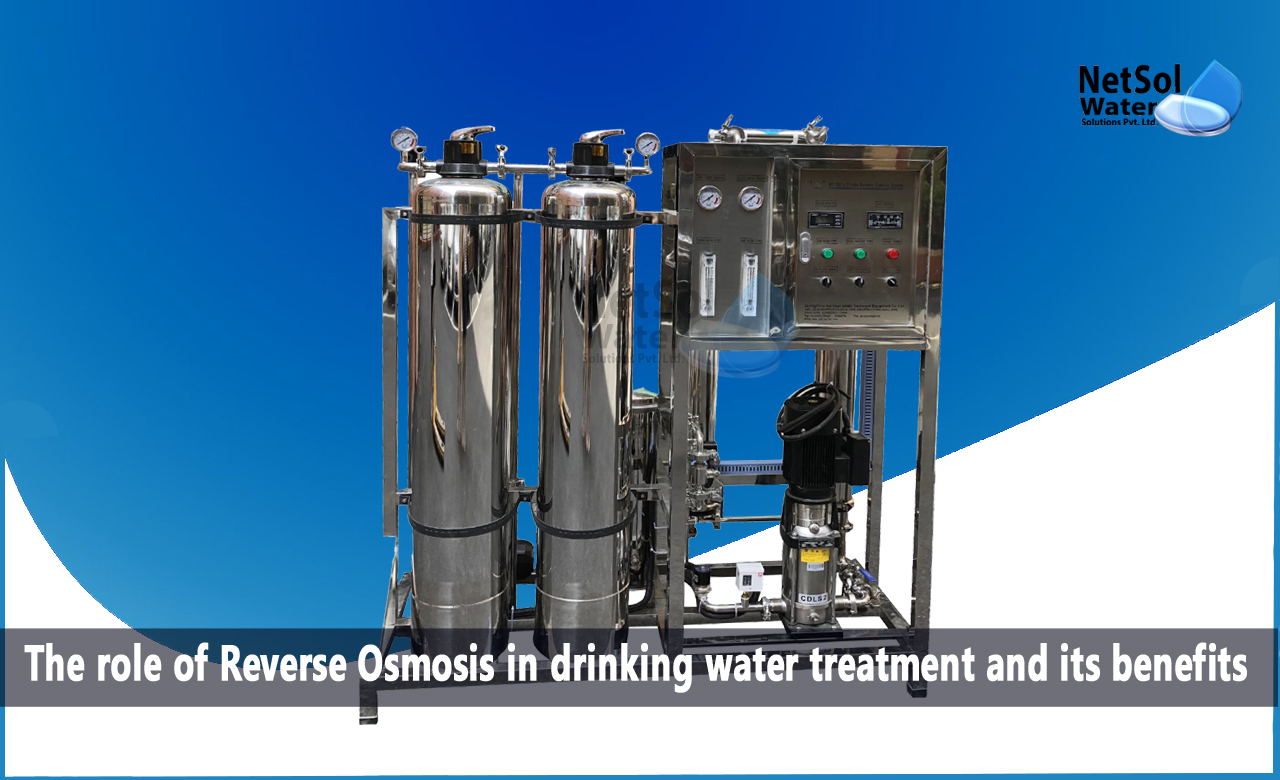What is the role of Reverse Osmosis in drinking water treatment?
Access to clean drinking water is essential for human health and well-being. Unfortunately, many communities around the world still face challenges in obtaining safe and potable water. Reverse osmosis (RO) has emerged as a powerful solution in drinking water treatment, providing an effective method to purify water and ensure its safety for consumption. In this blog, we will explore the role of reverse osmosis in drinking water treatment and its benefits in providing clean drinking water for all.
Understanding Reverse Osmosis:
Reverse osmosis is a water treatment process that utilizes semi-permeable membranes to separate impurities, contaminants, and dissolved solids from water. It works by applying pressure to the water, forcing it through the membrane while retaining the contaminants. The result is purified water, known as permeate, and a concentrated stream of impurities, known as reject or brine.
Applications in Drinking Water Treatment:
Reverse osmosis plays a vital role in the treatment of drinking water by effectively removing impurities and contaminants. It can be used to purify various water sources, including tap water, groundwater, and surface water. Reverse osmosis systems are versatile and can address specific water quality issues such as high levels of dissolved solids, heavy metals, nitrates, and organic compounds.
Benefits of Reverse Osmosis in Drinking Water Treatment:
Implementing reverse osmosis systems in drinking water treatment offers several benefits:
a. Improved Taste and Odor: Reverse osmosis removes substances that contribute to unpleasant tastes and odors, resulting in clean and refreshing drinking water.
b. Removal of Harmful Substances: RO systems effectively remove contaminants such as bacteria, viruses, pesticides, lead, arsenic, and chlorine, ensuring the safety of the drinking water.
c. Enhanced Safety and Health: By eliminating harmful substances, reverse osmosis provides a reliable method to protect public health and prevent waterborne diseases.
d. Cost-Effectiveness and Efficiency: Reverse osmosis systems offer cost-effective and efficient water treatment solutions, reducing the reliance on bottled water and the need for extensive chemical treatments.
Considerations for Implementing Reverse Osmosis Systems:
a. Water Source and Quality: Understanding the characteristics of the water source and its quality is essential in designing an effective reverse osmosis system.
b. System Design and Sizing: Proper system design and sizing ensure optimal performance and efficiency. Factors such as flow rate, pressure, and membrane selection need to be considered.
c. Maintenance and Monitoring: Regular maintenance and monitoring of the reverse osmosis system are crucial to ensure consistent performance and prolong the system's lifespan.
Challenges and Solutions:
a. Energy Requirements: Reverse osmosis systems require energy to operate. However, advancements in technology have led to more energy-efficient systems, and renewable energy sources can be integrated to minimize environmental impact.
b. Waste Management: The concentrated reject stream generated by reverse osmosis systems requires proper waste management. Strategies such as brine disposal, brine reuse, or brine minimization techniques can be implemented to address this issue.
c. Community Acceptance and Education: Education and community engagement play a vital role in gaining acceptance and understanding the benefits of reverse osmosis systems in drinking water treatment.
Conclusion
Reverse osmosis technology has revolutionized drinking water treatment by providing a reliable and effective method to produce clean and safe drinking water. Its ability to remove impurities, improve taste, and ensure health and safety makes it an essential tool in providing clean drinking water for all. By considering the specific water source, system design, and maintenance, reverse osmosis systems can be implemented successfully, addressing water quality challenges and promoting the availability of clean drinking water worldwide.



